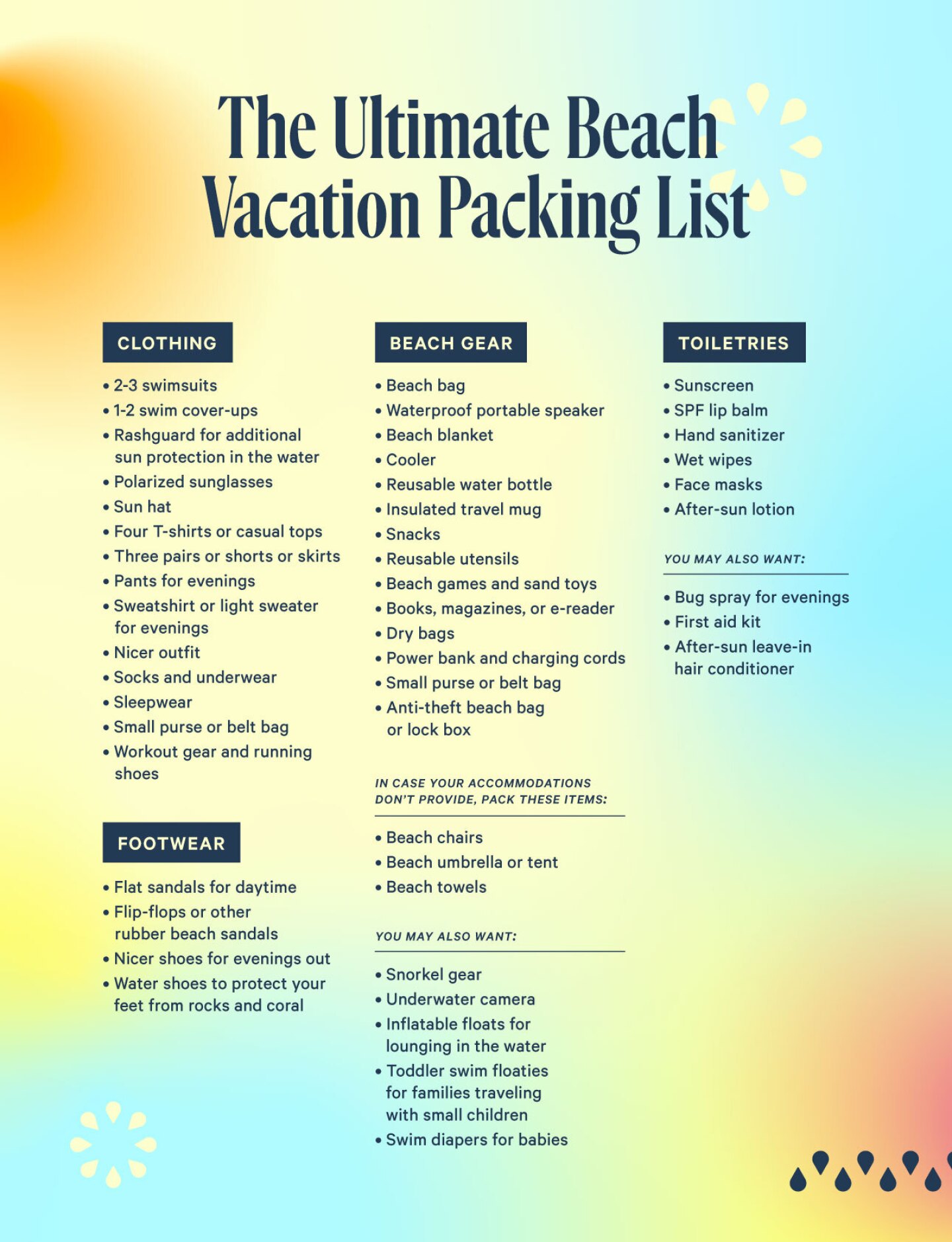- Abuse & The Abuser
- Achievement
- Activity, Fitness & Sport
- Aging & Maturity
- Altruism & Kindness
- Atrocities, Racism & Inequality
- Challenges & Pitfalls
- Choices & Decisions
- Communication Skills
- Crime & Punishment
- Dangerous Situations
- Dealing with Addictions
- Debatable Issues & Moral Questions
- Determination & Achievement
- Diet & Nutrition
- Employment & Career
- Ethical dilemmas
- Experience & Adventure
- Faith, Something to Believe in
- Fears & Phobias
- Friends & Acquaintances
- Habits. Good & Bad
- Honour & Respect
- Human Nature
- Image & Uniqueness
- Immediate Family Relations
- Influence & Negotiation
- Interdependence & Independence
- Life's Big Questions
- Love, Dating & Marriage
- Manners & Etiquette
- Money & Finances
- Moods & Emotions
- Other Beneficial Approaches
- Other Relationships
- Overall health
- Passions & Strengths
- Peace & Forgiveness
- Personal Change
- Personal Development
- Politics & Governance
- Positive & Negative Attitudes
- Rights & Freedom
- Self Harm & Self Sabotage
- Sexual Preferences
- Sexual Relations
- Sins
- Thanks & Gratitude
- The Legacy We Leave
- The Search for Happiness
- Time. Past, present & Future
- Today's World, Projecting Tomorrow
- Truth & Character
- Unattractive Qualities
- Wisdom & Knowledge
Health & Wellness Wednesdays
Getting Ready For A Holiday
I’m currently in the process of getting ready for a holiday. I swear as a parent with small children, the prep work for a holiday pushes you over the edge to the point where you really need a holiday!
Remembering all the different things you need to bring makes for a very long list.
For today, I figured I would leave you with my checklist that I’m working off of for our upcoming holiday to the beach:
-
Clothing
-
at least 4 pairs of shorts per person
-
at least 5 tops per person (more for each child)
-
At least 1 sweatshirt per person
-
At least 1 pair of pants per person
-
-
Underwear/socks
-
Good walking/running shoes
-
Sandals & water shoes
-
Bathing suits
-
Towels
-
Shower stuff for kids/adults (shampoo, conditioner, soap, etc)
-
Make up
-
Razors
-
Toothbrushes & toothpaste
-
2 toys per child
-
At least 2 books per child
-
Baby monitors
-
Extra pillows
-
Extra blankets
-
Sunscreen
-
Camping chairs
-
Outdoor games (like badminton)
-
Sand toys
-
Water bottles
-
Tablets, headphones & other electronics
-
Charging cables
-
Books for the adults
-
Child’s potty
-
Food (this is another whole list that I won’t include here)
This is by no means an exhaustive list. I can tell as I’m typing it out that I’m missing something…so I’ll keep adding to mine as I think about it.
The one thing I always remember to tell myself is that whatever we forget, we can purchase if necessary. This helps me not to stress out about the packing so much. If we have to go buy toothpaste because we forgot it, no big deal. If we have to buy a new pair of shoes, no big deal.
Interesting Fact #1
For both men and women, studies show that taking a vacation every two years compared to every six will lessen the risk of coronary heart disease or heart attacks.
Interesting Fact #2
The University of Pittsburgh’s Mind-Body Center found vacations increase pleasant emotions while reducing depression.
Interesting Fact #3
One study found that three days after vacation, people’s physical complaints, quality of sleep and mood had improved compared to before vacation.
Quote of the day
“I enjoy melancholic music and art. They take me to places I don't normally get to go.” ― Criss Jami
Article of the day - How to Pack a Suitcase
Packing may seem simple, but it is a science with rules that travelers often learn the hard way over thousands of miles on the road. Doing it strategically can be the difference between a harried vacation with countless detours to local drugstores and a streamlined one with everything you need at your fingertips. Here’s our shortcut to packing the right way: how to find the best suitcase, minimize your load, pack what you need on a beach trip or a business trip and cut down on wrinkles.
6 Packing Tips
Follow these basic tips to pack efficiently and effectively for any trip.

Credit...Julia Rothman
1. The bigger your suitcase, the more you will put into it: The simplest way to avoid bringing too many things is to buy a hard-sided suitcase, no more than 22 inches tall (so it can work as a carry-on) with a structured shell so you can’t squeeze in any extras.
2. Do the clothing countdown: If you need a mantra to help streamline your wardrobe, use the 5, 4, 3, 2, 1 rule for a weeklong trip: Limit yourself to no more than five sets of socks and underwear, four tops, three bottoms, two pairs of shoes and one hat. The list should be adjusted to suit your needs. Throw in a swimsuit and exercise gear or a suit jacket and dress if you’ll need them.
3. Lay out what you think you’ll need, then edit ruthlessly: “Think twice about everything you want to put in your bag,” said Ben Nickel-D’Andrea, who writes about flying first-class with his husband, Jon Nickel-D’Andrea, at No Mas Coach!, part of the BoardingArea blogger network. The jet-setting couple once flew to Morocco for nine days with only carry-on bags and backpacks. “Fully get rid of the ‘just in case I need it’ category,” he said. “If and when you need it, you can buy it.”
4. Think Tetris: The best way to fit everything into one bag: Fill every inch of space. For example, footwear should be stuffed with socks. Then lay your shoes together heel to toe at the bottom of your suitcase in a plastic shopping bag to protect clothes from dirt. How exactly you arrange everything in your suitcase is a matter of personal preference. Here are some popular strategies:
-
Roll your clothes. This helps to maximize space and minimize wrinkles.
-
Use packing cubes. These smaller bags help you keep your clothes compact and your outfits ordered.
-
Try the bundle technique. Carefully wrap each article of clothing around a central core, with underwear and T-shirts at the center, and large tailored items like blazers and dresses as the outer layer.
5. Keep liquids in easy reach: “Toiletries should always be placed on top of your suitcase in a clear bag since you never know when T.S.A. might be interested in looking,” said Matthew Klint, a frequent flier and the award expert at Live and Let’s Fly.
6. Never unpack your toiletries: “I recommend keeping a separate toiletry kit for traveling,” said Marie Kondo, author of “The Life-Changing Magic of Tidying Up: The Japanese Art of Decluttering and Organizing.” Keeping a set of bathroom products already packed also ensures that you don’t forget a toothbrush or contact lens case that you might use the morning of takeoff, she said. “Keep these items in a small pouch or box in the corner of a cabinet or drawer for easy access when packing for a trip.” To streamline what you need, consider all-in-one options like BB creams, which combine foundation, moisturizer and sunblock. To prevent leakage, double up that plastic bag.
Buying a new suitcase? This will make your choice simple.

Credit...Julia Rothman
You don’t need a pile of suitcases to be ready for all types of trips. Luggage essentials can be three key pieces: a carry-on bag, a check-in suitcase and a duffel bag.
This trio, said Anne McAlpin — a travel expert, frequent globe-trotter and author of the packing advice book “Pack It Up” — covers the bases for trips ranging from jaunt through multiple cities to a cruise to a nature-themed journey like a safari. “It’s unnecessary and expensive to have a big collection of luggage because most travelers tend to use the same pieces again and again,” she said.
Here’s how to choose within those categories:
How to Pick Your Carry-On and Check-In Luggage
Though most carry-ons and suitcases have boxy proportions and hard or soft shells, they can vary widely. That makes picking the best one more complicated than choosing a duffel bag. There are three basic variables to help guide your decision:
1. Two vs. four wheels: Which is the best way to wheel? Two-wheeled bags require you to drag them behind you in a straight line, and pulling heavy ones can be real chore. Four-wheeled bags, also known as spinners, rotate 360 degrees and are easier to maneuver; they can even be wheeled when they’re upright. But their design means that the wheels are more susceptible to damage.
2. Frequent travelers vs. occasional travelers: Travelers who are on the road several times a month need sturdy luggage that won’t fail even several years down the line. The more durable a bag, the pricier it will be — think $500 and up for a carry-on and $700 and higher for a check-in. But Lyle Saltzman, the director of merchandising for Luggage Factory, a Lambertville, New Jersey company selling more than 60 brands of luggage, said high-end bags come with generous warranties. “Many premium brands have a lifetime warranty policy that protects your investment, so if the bag gets damaged, they will repair or replace it for no charge,” he said.
Since occasional travelers don’t rely on their luggage nearly as often as road warriors, they can get by with a midrange bag, which will last them several years, and may have a limited warranty.
3. Soft- vs. hard-shell suitcase: There are benefits to both hard- and soft-side suitcases; ultimately the decision should be based on personal preference. Hard bags are aesthetically sleeker, said Dan Bettinger, an owner of Altman Luggage, a New York company that sells more than 100 brands of luggage. Hard bags also offer stronger protection than soft to the items inside and are less susceptible to wear and tear. As we mentioned earlier, a hard-shelled suitcase will also strictly limit how much you can stuff into your bag — a benefit if you tend to pack too much. And since the new models are made with lightweight polycarbonate, they don’t scratch easily and aren’t heavy. In fact, some models weigh less than soft suitcases, but be wary of a bag that’s too light: its frame may be flimsy.
The upside to soft bags: They tend to be light and have external pockets, which some travelers use to keep items like books or jackets handy. Many soft bags also have some give, a bonus if you like to cram as much as possible into a bag.
How to Pick a Duffel
Duffel is a catch-all term for any large bag made of fabric or leather. Their flexibility is useful on car trips, safaris, ski vacations or any other getaway that requires hauling bulky, odd-shaped gear. Another advantage: Traditional duffels fold up easily when empty, requiring little storage space. Additional features include shoulder straps and wheels that keep them feeling light, and external and internal pockets that keep smaller items from getting lost in the bag.
Recommended Duffel:
Eagle Creek No Matter What Rolling Duffel, $150
This water-resistant, large duffel is sturdy and easy to lug around: It has wheels, a removable shoulder strap that’s padded and adjustable, an external pocket and lockable zippers. And, it folds compactly into the accompanying pouch.
How Big Should Your Bag Be?
Check-in bags tend to range in size from 24 to 30 inches. Mr. Saltzman encourages travelers to choose a design that’s 28 inches or less because some airlines may consider a 29- to 30-inch suitcase oversized, which could mean paying a fee to check the bag.
Best High-Tech Accessories
There are bags (almost always hard-cased bags) with GPS tracking, phone chargers, built-in scales, biometric fingerprint locks and other tech features. But both Mr. Saltzman and Mr. Bettinger say you should not necessarily buy one of these yet; the category is new, so kinks in these bags are sometimes still being worked out. They’re also pricey.
You could also turn your current piece of luggage into something more high-tech with minimal effort, and at a lower cost. For ideas on how to do this, read The Wirecutter’s guide to smart accessories for your luggage. The most useful add-on is a Bluetooth tracker to improve your chances of finding lost luggage.
Packing Lists by Trip
Make planning for your trip easier with these packing lists.

Credit...Julia Rothman
Packing overwhelms even the savviest travelers. What do you really need, and how much should you bring? While the answers may be partly subjective, the experts we spoke to agreed: Whatever the destination, and no matter how long or quick the trip, the biggest mistake is to overpack. “Most people bring along too much stuff and don’t end up using half of it,” said Hitha Palepu, author of “How to Pack: Travel Smart for Every Trip.”
Lugging unnecessary items is time-consuming and cumbersome, she said, because there’s more to pack and unpack and more to keep track of when you’re on the road.
Lists are key to streamlining the process, so we’ve created lists to take the stress out of packing. Christine Sarkis, deputy executive editor of the online travel magazine SmarterTravel, said the secret to packing well is to adapt a packing list to your travel style. “You’ll hone it as you go, and it may change over time, but ultimately, relying on a list is a huge timesaver,” she said. Our suggestions are pared down to the absolute musts for a basic, seven-day trip.
Basic Travel Checklist
Clothing
Stick to one or two color palettes so outfits are easier to coordinate.
-
4 to 5 tops, types will depend on the weather and reason for travel
-
3 bottoms, types will depend on the weather and reason for travel
-
1 semiformal outfit, like a dress or a suit
-
7 undergarments
-
7 socks/stockings
-
2 sets of separate exercise clothes including socks, if needed
-
2 sets of pajamas or other sleepwear
-
1 lightweight foldable jacket or other outerwear, climate-appropriate
-
foldable rain jacket
Accessories:
-
3 pairs of shoes: a dressy pair, stylish sneakers that double as workout and walking shoes, and flip-flops for your hotel room, the pool or spa
-
2 bags: a tote or backpack and a smaller crossbody or clutch.
-
Sunglasses
-
Inexpensive jewelry, if needed
-
A voltage adapter, if traveling internationally
Toiletries
-
Dental supplies: toothbrush, toothpaste and floss
-
Soap, shampoo and conditioner
-
Deodorant
-
Makeup and makeup remover, if needed
-
A hairbrush and accessories like bobby pins, if needed
-
Sunscreen
-
Face cleanser and moisturizer
-
Body moisturizer
-
Hand sanitizer
-
Shaving supplies, if needed
-
Laundry soap sheets or packets of travel-sized laundry detergent, if needed
For Your Carry-On
-
Eyeglasses, if needed
-
Prescription medication and vitamins, if needed
-
A mini-medical kit: bandages, a pain reliever, a topical analgesic and diarrhea medication
-
Chargers for your electronics
-
Travel documents, including passport if traveling internationally, along with copies of your passport, identification and copies of your identification.
-
T.S.A. size-approved toiletries
-
Earplugs
-
Lip balm (helpful for chapped lips, common in-flight)
-
Valuables: jewelry, camera, tablet and/or laptop
-
Headphones
-
Neck pillow and blanket
-
A change of clothes
-
Melatonin or other sleep aid to help with jet lag, if crossing time zones
-
An empty water bottle (fill this post-security)
-
Entertainment: books, magazines, iPad
-
A pen
-
Travel-friendly food: nuts, energy bars, whole fruit or a sandwich
Download and print this packing list.
Beach Vacation Essentials
At most beach destinations you can easily find essentials like the sunscreen you forgot to pack or an extra bathing suit, said Gabe Saglie, a senior editor at the travel deals and advice site Travelzoo. And many hotels lend guests beach toys, beach towels, snorkeling sets and flotation devices; they may also dispense sunscreen by the pool or the beach. “The beauty of a beach vacation is how unencumbered it can be,” he said.
Ski Trip Essentials
A ski vacation means packing enough cold-weather essentials. But rather than loading your bags with bulky sweaters, Ms. Palepu recommends taking tops and bottoms made with Thinsulate, a lightweight, thin material to guard against the chill. They take far less room in your suitcase. You can find Thinsulate clothing at most sporting goods stores.
Download our ski vacation packing list here.
Note: If bringing your own ski gear, expect to pay a few hundred dollars in checked baggage fees for oversize luggage.
Business Trip Essentials
Ms. Sarkis of SmarterTravel has a packing strategy for business trips: “Since the schedule for most work trips is set in advance, and I know exactly what I’m going to be doing when, I plan out my outfits in advance and use most pieces of clothing three times.”
Download our packing list for your next business trip here.
When You Travel Off the Beaten Path
If you’re headed to a far-flung region your packing list should include items that protect you against mosquitoes and potentially contaminated water or food. Your nicest clothes aren’t compatible with visits to small villages or going on safari. “Assume everything you own is going to have an impermeable layer of dust,” said Ms. Palepu.
Download our packing list for far-flung trips here.
Cruise Packing List
A cruise is one of the most difficult trips to pack for because your wardrobe has to cover many occasions, Ms. Sarkis said. You may need casual clothing for daytime shore excursions, dressier clothing for onboard dinners and one black-tie outfit for the formal night (standard on many cruises). And it may include stops in different climates.
Download our packing list for your next cruise vacation here.
Camping Gear Essentials
Camping trips have a packing upside: Since most campers get to their destination by car, they don’t have to pack as compactly as for a flight. Camping doesn’t require dressy clothes; bring rugged gear and base your wardrobe on the climate.
Download our extensive camping trip packing list here.
Road Trip Essentials
On a road trip, Mr. Saglie said, you have more space for luggage than on an airline, and you’ll need it for items in case your car breaks down or you get a flat. For that reason, many essentials for road trips focus on emergencies rather than efficient use of space.
Download our road trip packing list here.
Packing for a Family Trip
When packing for a trip with kids, organization and paring down are key.

Credit...Julia Rothman
Packing for a family vacation isn’t easy. Besides keeping on top of your own list, you must anticipate the needs of children who don’t pack for themselves. And while you may survive without any item you forgot to bring, your children likely won’t fare as well without their must-haves, whether it’s a comfort blanket, bedtime book or electronic gadget.
Here’s how to take the headache out of packing for your family getaway.
The Two Packing Musts For Every Family Trip
Family travel experts agreed on two essentials for any trip, no matter the ages of your kids: packing cubes and a first-aid kit.
Packing cubes: Inexpensive fabric containers (square or rectangular) that zip closed and fit into carry-on bags and suitcases are an efficient way to separate and organize items for multiple family members, said Rainer Jenss, the president and founder of the Family Travel Association, a trade group. “Each person gets his or her own cube so you know exactly whose stuff is whose,” he said.
The cubes, sold on Amazon.com or at a retailers like Target or Walmart, come in varying sizes, and Eric Stoen, the founder of the online family travel site Travel Babbo, recommends using three or four cubes for each average-size check-in suitcase, in addition to saving a small area of the bag for shoes or toiletries.
If you’re staying in multiple hotel rooms or renting a house with several bedrooms, packing cubes act as mini-suitcases and can be divided among the various rooms. And one packing cube that everyone in the family can share: the one for dirty laundry.
First-aid kit: A well-stocked first-aid kit should be a non-negotiable for any family getaway. Mr. Stoen said that he’s rarely been on a vacation with his three children, now ages 7, 9 and 11, without relying on the kit. “It could be a stomach bug, an allergic reaction or a scrape, but there’s always something we turn to our kit for,” he said. (The first-aid kit may also be needed by a grown-up.)
The first-aid kit should include:
-
Bandages of varying sizes
-
An antibiotic ointment like Neosporin
-
Children’s fever and pain medicine
-
Children’s motion sickness remedy
-
Thermometer
-
Anti-itch cream
-
Children’s allergy medicine
-
Children’s medicine for stomach flu and constipation
-
Children’s cold and flu medication
-
Rehydration tablets suitable for children
What To Pack for Each Child
Clothes
-
Underwear
-
Pants and/or shorts, depending on the destination
-
Shirts (long- or short-sleeve, depending on the destination)
-
Pajamas
-
1 rain jacket
-
One dressy outfit
-
Sweaters or a jacket
-
Cold weather gear, like hat and gloves, if needed
-
1 sun hat, if needed
-
1 swimsuit
-
Shoes (flip-flops, sneakers and nicer shoes, if needed) and socks.
Toiletries
-
Sunscreen
-
Soap
-
Shampoo
-
Conditioner
-
Hair brush and barrettes, if needed
-
Body lotion
-
Toothbrush
-
Toothpaste
-
Bug spray
-
Deodorant, depending on the age
Infants
They’re the smallest people in your household, but babies need an inordinate amount of gear when they travel, said Lissa Poirot, the editor-in-chief of the online magazine Family Vacation Critic. But the biggest help is that many hotels today lend guests strollers, car seats, baby bathtubs and other infant essentials during their stay. “Depending on where you’re going, you may not have to pack as much as you think,” Ms. Poirot said. And, if traveling in the United States, another way to lighten your load is to order diapers, wipes, baby food and other basics on Amazon.com or Diapers.com, and have these items shipped directly to your destination so that they’re waiting for you upon arrival.
Download and print our infant packing list here.
Toddlers
Children between the ages of 2 and 4 still need a lot of gear when traveling. In addition, their packing list should include plenty of things to keep them entertained. “Toddlers get very squirmy on plane and car rides and need fun ways to stay busy,” Ms. Poirot said.
Download and print our toddler packing list here.
School-Aged Children
When your children turn 5, packing gets easier. Since your kids are used to carrying a backpack to school, they can also carry a backpack on the trip. This is also the age that children may get their first piece of luggage. Mr. Jenss recommends that parents, for the most part, make children responsible for what goes in the bag. “The more involved your kids are in the packing process, the more vested in the trip they’ll be,” he said.
Download and print the child’s packing list here.
Teenagers
While teens should pack and carry their own bags, parents should double-check for the essentials, like a cellphone charger, their I.D., any prescription medicine and eyeglasses, Ms. Poirot said. “Your packing job as a parent at this stage is minimal,” she said.
Download and print the teenager packing list here.
Any Questions?
Question of the day - What is the most important thing on your packing list for a holiday?
Experience & Adventure
What is the most important thing on your packing list for a holiday?










